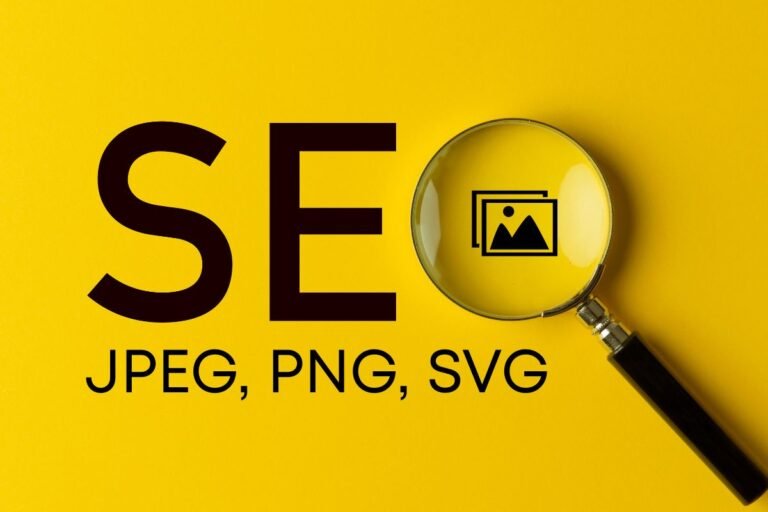If you’re building or scaling a business site in 2025, the right stack of plugins can be the difference between a site that quietly exists and one that converts. This guide rounds up the best WordPress plugins for business websites, organized by purpose, so you can make confident, future‑proof choices. You’ll find practical picks for security, speed, SEO, lead capture, ecommerce, analytics, privacy, and design workflows, plus clear pros and cons and value‑for‑money notes. Whether you’re a small business owner, freelancer, or agency, use this as your short list of recommended tools and best practices.
How To Choose Plugins Safely And Strategically
Verify Compatibility, Updates, And Support
- Check the plugin’s last update (ideally within the past 3–6 months) and tested up to version in the WordPress.org repo.
- Scan recent reviews and support threads to gauge responsiveness. Premium plugins should show active changelogs and documented roadmaps.
- Confirm compatibility with your theme, PHP version, and key plugins (e.g., WooCommerce, page builder). When in doubt, test on staging.
Assess Performance Impact And Bloat
- Favor plugins that do one job well over “kitchen‑sink” add‑ons you won’t use.
- Use tools like Query Monitor and Lighthouse/PageSpeed Insights to measure before/after. Look for minimal front‑end assets, deferred scripts, and server‑side efficiency.
- Prefer hosts with built‑in object caching (Redis) and consider a performance suite that replaces multiple niche plugins.
Prioritize Security, Reputation, And Licensing
- Choose vendors with responsible disclosure policies and frequent security patches (e.g., Wordfence blog notices, Patchstack advisories).
- Verify licensing terms and renewal pricing: budget for annual updates on mission‑critical tools.
- Limit admin access, use least privilege, and enable 2FA. A great plugin can’t fix weak governance.
Plan For Scalability And Maintainability
- Map features to business goals (SEO, bookings, CRM). Document what each plugin does and who maintains it.
- Keep total plugin count lean: fewer high‑quality plugins generally beats many overlapping ones.
- Standardize on a stack across client sites to streamline updates and training.
Core Foundation: Security, Backups, And Maintenance
Security And Firewall/Hardening Plugins
- Wordfence and Solid Security (formerly iThemes) are top picks for malware scanning, firewall, login hardening, and 2FA. Sucuri offers a plugin plus optional cloud WAF/CDN service for edge‑level protection.
- Pros: Comprehensive protection, clear alerts, login security: solid free tiers.
- Cons: Can add overhead: tune carefully to avoid false positives. Cloud WAF (Sucuri/Cloudflare) is extra cost, but worth it for businesses.
Automated Backups, Off‑Site Storage, And Restore
- UpdraftPlus, Jetpack VaultPress Backup, BlogVault, and WPVivid let you schedule incremental backups to S3, Dropbox, or Google Drive with 1‑click restores.
- Pros: Off‑site copies, staging, easy migrations (BlogVault/Duplicator Pro excel here).
- Cons: Free versions may limit schedules/locations: test restores regularly, don’t wait for a crisis.
Uptime Monitoring, Updates, And Management Suites
- ManageWP, MainWP, and WP Umbrella centralize updates, uptime pings, backups, and client reports across many sites.
- Pros: Saves hours monthly: great for agencies/freelancers.
- Cons: Paywalls for advanced features: set safe update windows and exclude critical plugins until tested.
Performance And Image Optimization
Caching, Minification, And Page Optimization
- WP Rocket (premium) is the most set‑and‑forget caching plugin for most hosts. LiteSpeed Cache is unbeatable on LiteSpeed servers. SiteGround Optimizer is excellent on SiteGround.
- Pros: Page and browser caching, file optimization, delay JS, preloading: measurable Core Web Vitals gains.
- Cons: Over‑aggressive minify/combining can break scripts, toggle features gradually. Avoid stacking multiple caching plugins.
Image Compression, WebP/AVIF, And Lazy Loading
- ShortPixel, Imagify, EWWW, and Optimole compress images on upload and convert to WebP/AVIF. Most handle adaptive image delivery and lazy loading.
- Pros: 30–80% smaller images, faster LCP/CLS. Bulk optimization for media libraries.
- Cons: Heavy libraries may consume monthly credits: watch for double‑lazy conflicts with themes/builders.
CDN Integration And Asset Offloading
- Cloudflare’s free plan + official plugin is a reliable baseline. Bunny CDN is low‑latency and affordable. WP Offload Media offloads media to S3/DO Spaces + CDN.
- Pros: Global edge delivery, TTFB reductions, bandwidth savings.
- Cons: Requires DNS/SSL know‑how: misconfiguration can break cookies or admin previews. Test thoroughly on staging.
SEO And Schema For Business Growth
All‑In‑One On‑Page SEO Suites
- Rank Math, Yoast SEO, SEOPress, and All in One SEO cover titles/meta, indexation, content analysis, and structured data basics.
- Pros: Easy onboarding, editor tips, social previews. Rank Math/SEOPress often pack the most features for the price.
- Cons: Feature overlap with other plugins: disable modules you don’t need. Avoid running two SEO suites simultaneously.
Technical SEO: Redirects, Sitemaps, 404s, And Links
- Redirection is the gold standard for 301/410 rules and 404 logs. Most SEO suites handle XML sitemaps well (WordPress also has a basic native sitemap).
- Use Broken Link Checker (cloud‑based by WPMU DEV) or Ahrefs/Screaming Frog externally to avoid on‑site crawl overhead.
- Pros: Cleaner crawl paths, preserved rankings after URL changes.
- Cons: On‑site broken link scanning can be resource heavy, prefer cloud or periodic desktop crawls.
Schema Markup, Local SEO, And Reviews
- For rich snippets, use native schema from Rank Math/Yoast or Schema Pro for advanced types. Local SEO add‑ons (Yoast Local, Rank Math Local) manage NAP, service areas, and KML.
- Reviews: Site Reviews, WP Social Ninja, or Google Reviews plugins embed social proof.
- Tip: Keep schema accurate and minimal, wrong markup can hurt visibility.
Forms, CRM, And Lead Capture
Form Builders, Conditional Logic, And Spam Protection
- Gravity Forms and Fluent Forms are the best all‑rounders for business logic, multi‑step forms, and payment fields. WPForms is beginner‑friendly.
- Anti‑spam: Akismet, Google reCAPTCHA v3, hCaptcha, or Cloudflare Turnstile. Add honeypots and rate limiting.
- Pros: Powerful conditional logic, partial entries, file uploads, calculator fields.
- Cons: Premium add‑ons increase cost: poorly built forms can slow pages, load assets only where needed.
CRM And Email Marketing Integrations
- FluentCRM (self‑hosted), HubSpot for WordPress, MailPoet, and Groundhogg let you capture, segment, and email without leaving WP. For SaaS CRM, integrate with HubSpot, ActiveCampaign, or Mailchimp via native add‑ons or Zapier/Make.
- Pros: Tag‑based automations, lead scoring, synced forms, and basic pipelines.
- Cons: Self‑hosted email requires solid deliverability (SPF/DKIM/DMARC). SaaS CRMs may cost more but reduce server strain.
Calendars, Booking, Quotes, And Proposal Workflows
- Booking: Amelia and Simply Schedule Appointments are stable and user‑friendly. For events, The Events Calendar.
- Quotes/invoices: Sprout Invoices or WPForms/Gravity Forms + Stripe add‑ons. Proposal tools like Better Proposals integrate via embeds/links.
- Pros: Fewer back‑and‑forth emails: automated reminders.
- Cons: Complex schedules require careful setup: test timezone and payment edge cases.
Ecommerce, Memberships, And Payments
Storefronts, Payment Gateways, And Checkout Optimization
- WooCommerce is the default for physical products: Easy Digital Downloads (EDD) excels at digital goods. For quick payments without a cart, use WP Simple Pay (Stripe).
- Checkout optimization: CartFlows, CheckoutWC, or FunnelKit improve UX, order bumps, and funnels. Consider WooPayments (Stripe‑powered), Stripe, or PayPal Complete Payments.
- Pros: Massive ecosystems, flexible shipping/taxes, subscriptions.
- Cons: Extension costs add up: performance tuning is essential for high traffic.
Subscriptions, Memberships, And Digital Products
- Subscriptions: Woo Subscriptions (official), SureCart (modern checkout + subscriptions), or EDD Recurring.
- Memberships: MemberPress, Paid Memberships Pro, Restrict Content Pro: all integrate with major payment gateways.
- Pros: Recurring revenue, gated content, course add‑ons.
- Cons: Proration, trial periods, and access rules can get complex, document your logic and test renewals.
Taxes, Invoicing, Compliance, And Fraud Prevention
- Taxes: WooCommerce Tax (with Jetpack) automates US sales tax: EU VAT? Use EU/OSS add‑ons. Avalara integrations exist for advanced needs.
- Invoices/PDFs: WooCommerce PDF Invoices & Packing Slips: EDD Invoices for digital.
- Fraud: Stripe Radar built‑in: FraudLabs Pro or Signifyd for extra screening.
- Tip: Keep KYC/PCI scope minimal, use hosted fields and tokenization where possible.
Analytics, Experimentation, And Privacy
Analytics Dashboards And Event Tracking
- Site Kit by Google integrates GA4, Search Console, and PageSpeed. Plausible and Matomo are privacy‑friendly alternatives with WordPress plugins.
- For granular events without code, GTM4WP (Google Tag Manager for WordPress) or PixelYourSite helps map clicks, forms, and ecommerce.
- Pros: Clear KPIs in WP, consolidated dashboards.
- Cons: GA4 learning curve: mis‑tagging inflates or misses conversions, document your data layer.
A/B Testing, Heatmaps, And UX Insights
- A/B testing: Nelio A/B Testing and Split Hero work well in WordPress: VWO and Convert integrate via scripts.
- Heatmaps/session replay: Microsoft Clarity (free) and Hotjar (freemium) reveal friction.
- Pros: Evidence‑based design decisions: rapid wins on headlines, CTAs, and layouts.
- Cons: Needs traffic for statistical significance: be mindful of privacy policies.
Cookie Consent, GDPR/CCPA, And Data Retention
- Complianz and CookieYes handle consent banners, region targeting, and script blocking. Cookiebot is another enterprise‑friendly option.
- Pros: Policy generators, consent logs, and automatic script categorization.
- Cons: Over‑blocking can break marketing tags: regularly audit categories and retention windows.
Design, Blocks, Accessibility, And Workflow
Block Libraries, Page Builders, And Pattern Kits
- For block‑first builds: GenerateBlocks, Kadence Blocks, Spectra, and Stackable offer performant design controls. Pair with top themes like Kadence, Blocksy, or Astra (check out their Starter Templates/Pattern Kits for speed).
- Page builders: Elementor and Beaver Builder remain popular: use their performance modes and avoid global asset bloat.
- Pros: Faster prototyping: consistent design systems.
- Cons: Too many libraries = CSS/JS overhead. Standardize on one stack per site.
Custom Fields, Custom Post Types, And Dynamic Content
- Advanced Custom Fields (ACF) is the go‑to for structured content: Meta Box and Pods are excellent alternatives. Custom Post Type UI simplifies CPT/taxonomy registration.
- Dynamic listings: Query Loop blocks, Kadence/Blocksy hooks, or JetEngine (for Elementor) power directories and listings.
- Pros: Scalable content modeling: cleaner admin UX.
- Cons: Requires planning, define fields and templates before content migration.
Accessibility, Image Alt/Media Tools, And Productivity
- Accessibility: Equalize Digital’s Accessibility Checker flags issues: WP Accessibility and One Click Accessibility offer quick wins (skip links, outline focus).
- Media workflow: Enable Media Replace, Regenerate Thumbnails, and Safe SVG. Consider AI alt‑text helpers cautiously, always review for accuracy.
- Dev tools: Query Monitor for debugging, Better Search Replace for migrations, and WP Migrate for staging syncs.
- Tip: Add manual keyboard tests and color‑contrast checks to your launch checklist.
Conclusion
Choosing the best WordPress plugins for business websites isn’t about installing everything, it’s about curating a lean, reliable stack that protects your site, loads fast, ranks well, and converts. Start with the foundation (security, backups, maintenance), then layer performance, SEO/schema, lead capture, ecommerce/payments if needed, analytics/experiments, and a consistent design system.
Recommended next steps:
- Pick one tool per category from the short lists above and test on staging.
- Measure Core Web Vitals, conversions, and support response times, not just features.
- Revisit your stack quarterly. Remove overlap, and keep licenses active for mission‑critical plugins.
If you’re ready to go deeper, explore our curated lists of recommended tools, best plugins by category, top themes for performance, and time‑saving services (managed hosting, CDNs, monitoring). Small, smart changes add up fast, and the right stack will pay for itself in speed, leads, and sales.
Key Takeaways
- Build a lean, future‑proof stack: start with security, backups, and maintenance, then add performance, SEO/schema, lead capture, ecommerce/payments, analytics/testing, and a consistent design system.
- Choose plugins that are actively updated, compatible, and focused; test on staging and measure impact with Lighthouse/PageSpeed and Query Monitor to prevent bloat.
- Prioritize speed: use one caching plugin (WP Rocket or LiteSpeed Cache), compress images to WebP/AVIF (ShortPixel/Imagify), and pair with Cloudflare or Bunny CDN without stacking optimizers.
- Grow visibility and leads: run an SEO suite (Rank Math or Yoast) with clean redirects/schema, build fast forms (Gravity Forms or Fluent Forms) with anti‑spam, and connect CRM/email tools like FluentCRM or HubSpot.
- Monetize confidently: use WooCommerce for physical goods or EDD for digital, optimize checkout with CartFlows/CheckoutWC, and budget for extensions while tuning performance.
- Operationalize your stack: standardize across sites, document owners, keep licenses active, review quarterly, and track Core Web Vitals and conversions—the best WordPress plugins for business websites are the ones you can maintain and measure.
Frequently Asked Questions
What are the best WordPress plugins for business websites in 2025?
Start with security (Wordfence, Solid Security, or Sucuri), backups (UpdraftPlus or BlogVault), performance (WP Rocket or LiteSpeed Cache), SEO (Rank Math or Yoast), forms/CRM (Gravity Forms, Fluent Forms; FluentCRM/HubSpot), ecommerce (WooCommerce or EDD), analytics (Site Kit or Plausible), and privacy (Complianz). Keep the stack lean and tested.
How should I choose plugins safely for a business site?
Check recent updates (ideally within 3–6 months), compatibility with your theme/PHP/WooCommerce, and support responsiveness. Test on staging, measure before/after with Query Monitor and Lighthouse, and confirm licensing/renewal costs. Limit admin access and enable 2FA—governance matters as much as features for the best WordPress plugins for business websites.
Which caching and image tools work best, and should I stack optimizers?
WP Rocket is a safe, set‑and‑forget pick on most hosts; LiteSpeed Cache excels on LiteSpeed servers, and SiteGround Optimizer fits SiteGround. Don’t stack multiple caching plugins. For images, ShortPixel, Imagify, or EWWW compress and convert to WebP/AVIF. Toggle minify/deferral gradually to avoid breaking scripts—prioritize stability for business websites.
What GDPR/CCPA cookie consent plugins do you recommend for business websites?
Complianz and CookieYes provide consent banners, region targeting, script blocking, and policy generators; Cookiebot is enterprise‑friendly. Configure categories carefully to avoid over‑blocking marketing tags, document retention windows, and review changes quarterly. This balances compliance and data accuracy while maintaining performance for the best WordPress plugins for business websites stack.
How many plugins are too many on a WordPress business site?
There’s no fixed limit—quality and impact matter more than count. Many successful sites run 15–30 well‑maintained plugins. Avoid overlaps, disable unused modules, and measure performance with Query Monitor and Lighthouse. Document each plugin’s role, standardize your stack, and prune quarterly to keep pages fast and maintenance predictable.
Do small business WordPress sites need a CDN, and which one is easiest to start with?
Not mandatory, but a CDN helps if you serve regional or global visitors, large images, or see bandwidth spikes. Cloudflare’s free plan plus the official plugin is an easy baseline; Bunny CDN is affordable and fast. Test TTFB and caching on staging, and validate cookie/admin previews before going live.


